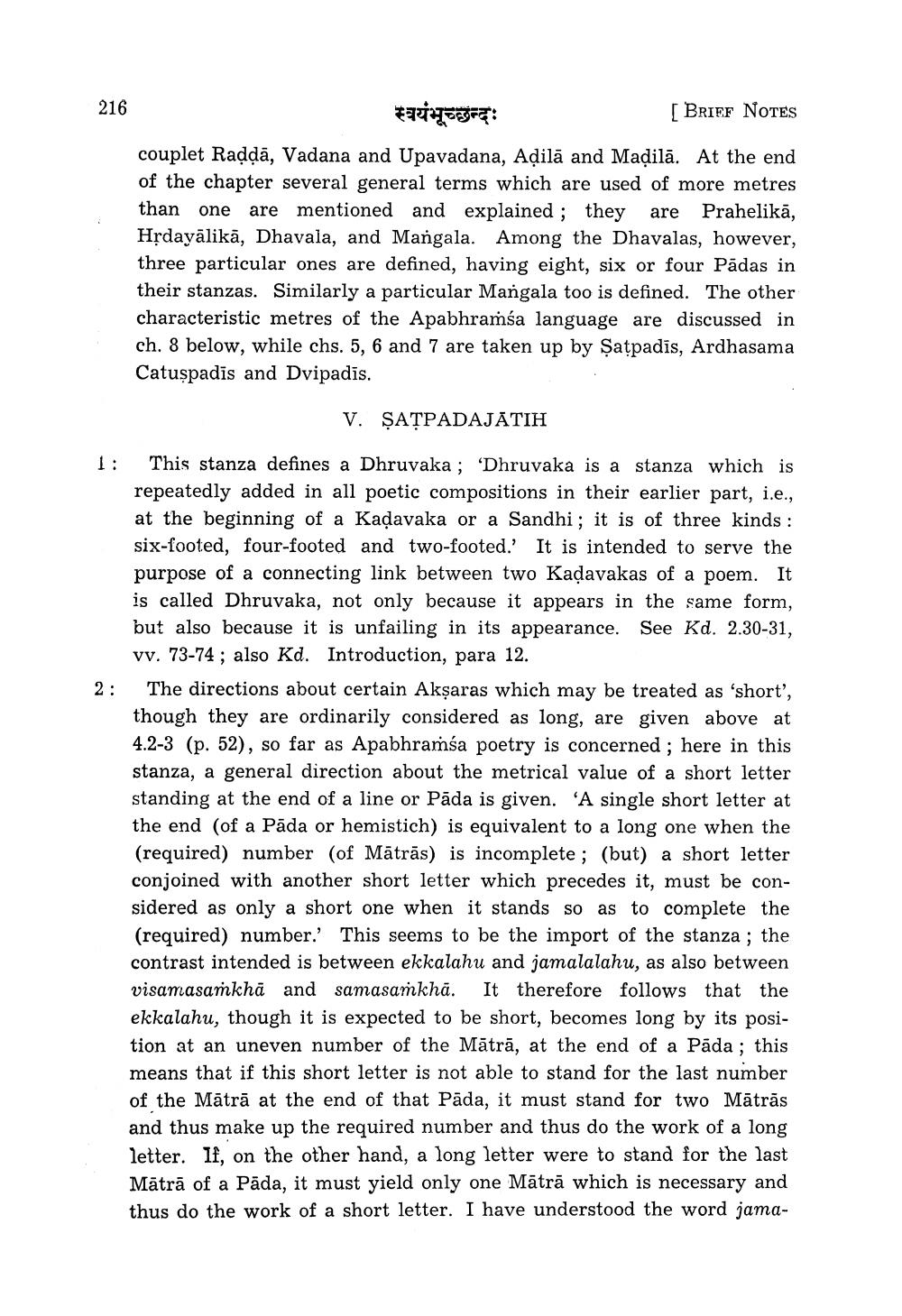________________
216
स्वयंभूच्छन्दः
BRIEF NOTES
couplet Raddā, Vadana and Upavadana, Adilā and Madilā. At the end of the chapter several general terms which are used of more metres than one are mentioned and explained ; they are Prahelikā, HỊdayālikā, Dhavala, and Mangala. Among the Dhavalas, however, three particular ones are defined, having eight, six or four Pādas in their stanzas. Similarly a particular Mangala too is defined. The other characteristic metres of the Apabhramba language are discussed in ch. 8 below, while chs. 5, 6 and 7 are taken up by Satpadis, Ardhasama Catuspadis and Dvipadis.
V. ȘAȚPADAJĀTIH
1:
2:
This stanza defines a Dhruvaka; 'Dhruvaka is a stanza which is repeatedly added in all poetic compositions in their earlier part, i.e., at the beginning of a Kadavaka or a Sandhi; it is of three kinds : six-footed, four-footed and two-footed. It is intended to serve the purpose of a connecting link between two Kadavakas of a poem. It is called Dhruvaka, not only because it appears in the same form, but also because it is unfailing in its appearance. See Kd. 2.30-31, vv. 73-74 ; also Kd. Introduction, para 12.
The directions about certain Aksaras which may be treated as 'short', though they are ordinarily considered as long, are given above at 4.2-3 (p. 52), so far as Apabhramsa poetry is concerned ; here in this stanza, a general direction about the metrical value of a short letter standing at the end of a line or Pāda is given. 'A single short letter at the end (of a Pāda or hemistich) is equivalent to a long one when the (required) number (of Mātrās) is incomplete ; (but) a short letter conjoined with another short letter which precedes it, must be considered as only a short one when it stands so as to complete the (required) number. This seems to be the import of the stanza; the contrast intended is between ekkalahu and jamalalahu, as also between visamasamkha and samasamkhā. It therefore follows that the ekkalahu, though it is expected to be short, becomes long by its position at an uneven number of the Mātrā, at the end of a Pada; this means that if this short letter is not able to stand for the last number of the Mātrā at the end of that Pāda, it must stand for two Mātrās and thus make up the required number and thus do the work of a long letter. If, on the other hand, a long letter were to stand for the last Mātrā of a Pāda, it must yield only one Mātrā which is necessary and thus do the work of a short letter. I have understood the word jama




